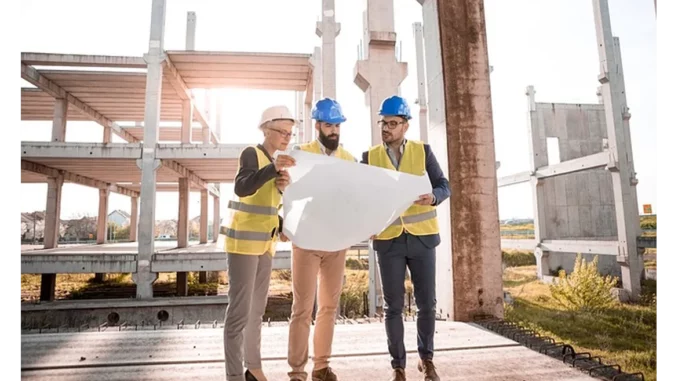
When I sat down with Claire Hamilton, an experienced sustainability consultant, I was eager to delve into the intricacies of green building standards. Claire’s extensive work with various environmental certifications, including BREEAM USA In-Use Commercial version 6 (BREEAM), Green Globes for Existing Buildings (version 2023) (Green Globes EB), and LEED v4.1 for Building Operations and Maintenance, made her the ideal person to offer insights into these robust frameworks.
Successful low-energy building design hinges on careful planning. Focus360 Energy can help.
A Journey into Sustainable Building Standards
Claire began by sharing her journey into the field of sustainability. “I’ve always been passionate about the environment,” she said, her eyes lighting up. “My interest in green buildings started during my architecture studies. I realised that buildings could either be part of the problem or part of the solution. That’s when I decided to focus on sustainable design and operations.”
Her journey led her to work with numerous certification systems, each with its unique approach and criteria. Claire’s experiences provided her with a nuanced understanding of how these systems operate and their impact on the built environment.
BREEAM USA In-Use: A Holistic Approach
When asked about BREEAM USA In-Use Commercial version 6, Claire described it as a comprehensive and flexible tool for assessing and certifying the sustainability of existing buildings. “BREEAM is very holistic,” she explained. “It covers a wide range of categories, including energy, water, health and well-being, and materials. The goal is to improve the building’s overall environmental performance.”
One of the standout features of BREEAM, according to Claire, is its adaptability. “BREEAM allows for customisation based on the building’s specific circumstances. This means that the assessment can be tailored to address the most relevant issues for that particular building.”
Claire also highlighted the importance of the continuous improvement aspect of BREEAM. “It’s not just about getting certified and then forgetting about it. BREEAM encourages ongoing monitoring and improvements, which ensures that buildings continue to perform well over time.”
Green Globes for Existing Buildings: A Pragmatic Choice
Next, we turned our attention to Green Globes for Existing Buildings (version 2023). Claire described Green Globes as a user-friendly and pragmatic certification system. “What I like about Green Globes is its accessibility,” she said. “The process is straightforward, and the criteria are clear and easy to understand.”
Claire pointed out that Green Globes is particularly well-suited for buildings that may not have the resources for more complex certification processes. “It’s a great option for smaller buildings or those with limited sustainability budgets. The system is designed to be flexible and less resource-intensive, which makes it an attractive choice for many building owners.”
Another advantage of Green Globes, according to Claire, is its focus on practical, actionable improvements. “Green Globes emphasises real-world changes that can make a tangible difference. It’s about finding feasible solutions that can be implemented without significant disruption.”
LEED v4.1: The Gold Standard
Finally, we discussed LEED v4.1 for Building Operations and Maintenance, a system that Claire described as the “gold standard” in green building certifications. “LEED is probably the most well-known and widely recognised certification system,” she noted. “It has a strong reputation and is often seen as the benchmark for sustainability in the built environment.”
Claire explained that LEED v4.1 places a strong emphasis on performance metrics and data-driven decision-making. “One of the key features of LEED v4.1 is its focus on measurable outcomes. It’s not just about ticking boxes; it’s about demonstrating real, quantifiable improvements.”
She also highlighted the comprehensive nature of LEED. “LEED covers a broad spectrum of sustainability issues, from energy and water efficiency to indoor environmental quality and waste reduction. It’s a very thorough and rigorous system.”
Choosing the Right Certification
When asked how building owners and managers should choose between these certifications, Claire emphasised the importance of understanding the specific needs and goals of each project. “There’s no one-size-fits-all answer,” she said. “Each certification system has its strengths and is suited to different types of projects and priorities.”
Claire advised considering factors such as the building’s current performance, available resources, and long-term sustainability goals. “It’s essential to conduct a thorough assessment and determine which system aligns best with the building’s objectives and constraints.”
The Future of Green Building Certifications
Looking ahead, Claire expressed optimism about the future of green building certifications. “I think we’ll continue to see advancements in these systems, with more emphasis on technology and data-driven solutions. There will also be a greater focus on resilience and adaptability, particularly in the face of climate change.”
She concluded our conversation with a hopeful message. “Ultimately, the goal is to create buildings that are not only environmentally sustainable but also enhance the well-being of their occupants. By choosing the right certification and committing to continuous improvement, we can make a significant positive impact on our built environment.”
As I wrapped up my interview with Claire Hamilton, I couldn’t help but feel inspired by her dedication and insight. Her expertise and passion for sustainable building practices serve as a valuable guide for anyone navigating the complex landscape of green building certifications.
Lewis Davis


Be the first to comment